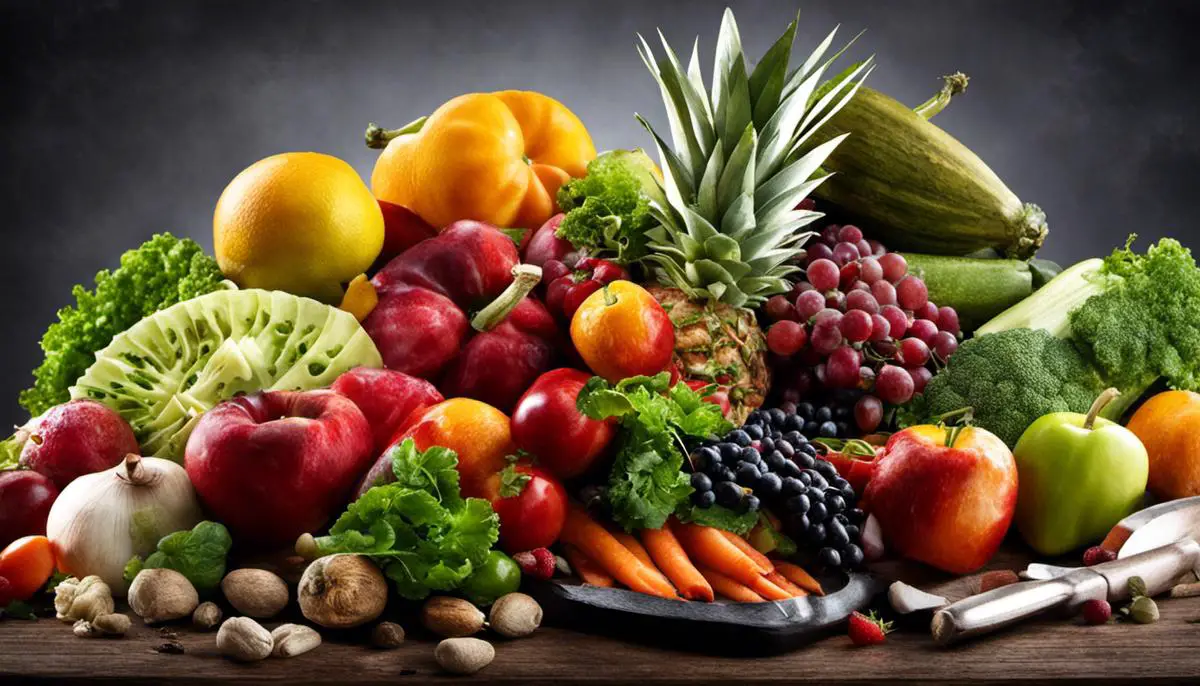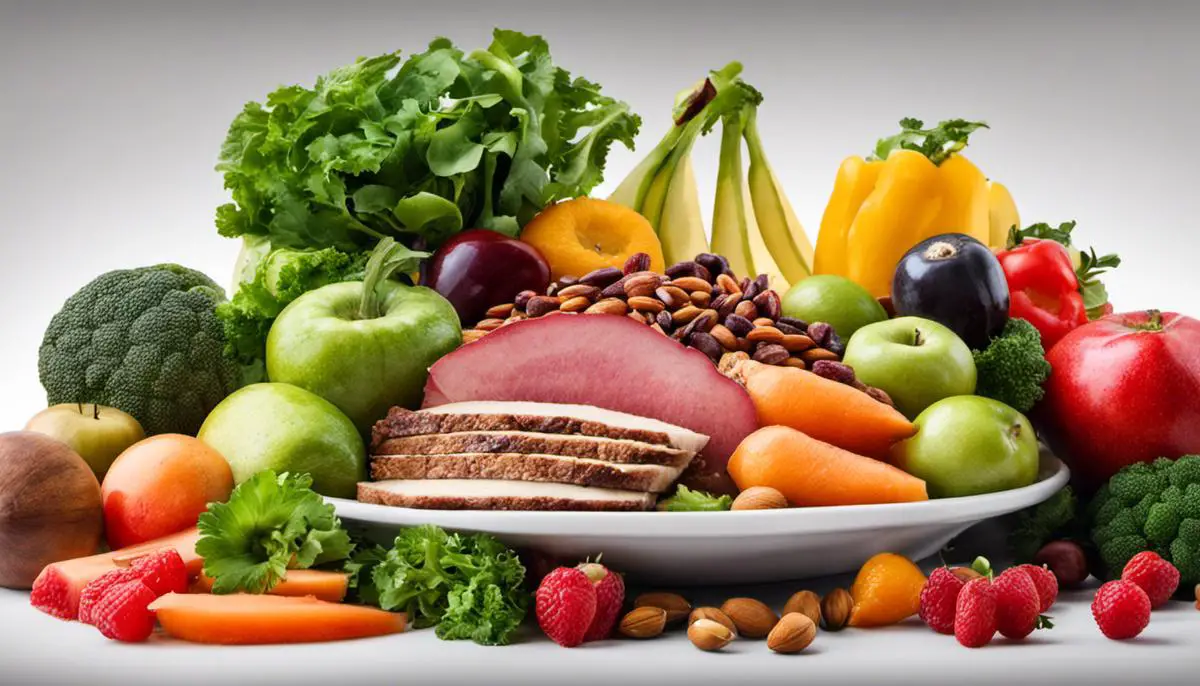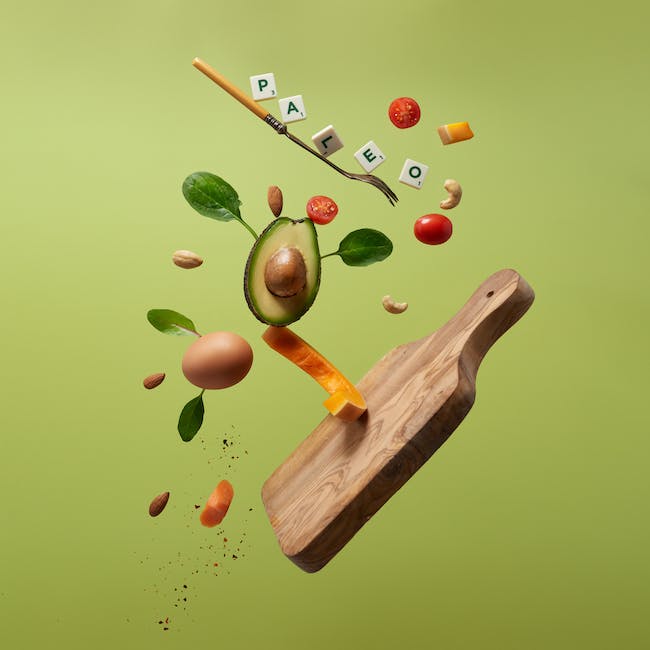Embracing a healthier lifestyle often begins with our eating habits. One dietary approach that has attracted significant attention in recent years is the Paleo diet, otherwise known as the ‘Caveman’ Diet. Distinct from other modern dietary plans, the Paleo diet channels the food habits of our evolutionary ancestors, focusing on ‘clean eating’ and eschewing processed foods. This essay delves into the roots of the Paleo diet, the philosophies underlying it, and the characteristic foods it promotes and excludes. Furthermore, it outlines the reported health benefits, reviewing current scientific evidence relating to weight loss, diabetes, heart disease, and inflammation. To provide context, the Paleo diet is compared with other well-known diets such as Keto, Atkins, and Vegan. Finally, this essay offers practical advice on adopting a Paleo lifestyle from meal planning to dining out, alongside a selection of tantalizing Paleo-friendly recipes to inspire your culinary adventures.
Understanding the Basics of the Paleo Diet
Overview of the Paleo Diet
The Paleo Diet, also widely recognized as the Caveman, Stone Age, or Hunter-Gatherer Diet, is centered on the concept of eating foods that our Paleolithic ancestors supposedly consumed. The emphasis is on whole, unprocessed foods that could have been hunted or gathered. This dietary approach reasons that our bodies are genetically mismatched to the modern diet that emerged with farming practices, which saw a shift from the nutritionally varied menu of hunter-gatherers to a far less diverse agricultural one.
Origination of the Paleo Diet
The term “Paleo” comes from the Paleolithic era, an archaeological period that lasted over 2 million years ago, ending around 10,000 B.C. with the advent of agriculture. This era is significant to the diet, as its followers believe that the human body is best suited to thrive on the foods that were available during that period. The concept of a Paleo diet, as a dietary practice designed to emulate how prehistoric humans ate, originated in the mid-20th century, but it gained massive popularity in the 21st century, thanks largely to the work of Dr. Loren Cordain.
Philosophy of the Paleo Diet
The primary philosophy of the Paleo diet is that the mismatch between our bodies and the modern diet contributes to obesity, diabetes, and heart disease. Advocates of this diet believe that the human body has not been able to adapt to the change in diet that came with the emergence of farming—particularly the significant increase in grain consumption.
Food Inclusions
The Paleo diet typically includes lean meats, fish, fruits, vegetables, nuts, and seeds. Lean meats are high in protein, which promotes feelings of fullness and can prevent overeating. Fish, notably those rich in Omega-3 fatty acids, are also encouraged, as they can reduce inflammation and promote heart health. Fruits and vegetables are packed with vitamins, minerals, and antioxidants, which are believed to fight against aging and diseases like cancer.
Food Exclusions
On the other hand, the paleo diet excludes foods that became common when farming emerged about 10,000 years ago. Dairy products, legumes, and grains are all off the menu. This includes both refined grains—like pasta, bread, and cereals—that are a staple of most diets, and whole grains, which are considered healthy by most nutrition standards. The exclusion of these foods is based on the belief that these types of food contribute to inflammation and related health problems. Similarly, the diet also cuts out all processed foods and sugars, which were not a part of our ancestors’ eating routine.
Exploring the Varieties of the Paleo Diet
In time, diverse interpretations of the Paleo Diet have emerged, each with its unique nuances concerning food allowances. Some adaptations of this diet offer leniencies towards foods like dairy products and white potatoes, while others remain firmly aligned with the stringent framework from which the original idea was conceived. Despite these divergences, the heart of every Paleo Diet is sustained by one commonality: a move towards the uncomplicated, unprocessed foods our forebears consumed, to enhance health and wellness.

Health Benefits and Existing Scientific Evidence
The Influence of the Paleo Diet on Health and Weight Loss
Often referred to as the caveman or Stone Age diet, the Paleo diet is widely commended for the perceived health advantages it brings, notably in the area of weight reduction. This is majorly relied upon its focus on the consumption of whole, unprocessed foods and disallowing food types which are typically associated with an increase in weight, such as refined sugars, grains, and unhealthy fats. Under the diet’s guidelines, one is encouraged to partake in foods rich in protein and fiber like lean meats, seafood, fresh fruits and vegetables, and nourishing fats from nuts and seeds, while limiting intake of detrimental fats and highly processed carbs. It follows then, that weight loss has been reported as one positive side effect experienced by many who are following this dietary regimen.
Moreover, research has pointed out that embarking on the Paleo diet could result in substantial weight loss without the necessity to restrict calorie intake. A particular study made a comparative analysis of a Paleo diet and a conventional one, based on changes in weight and waist circumference. The outcome revealed that overweight or obese postmenopausal women who took on the Paleo diet, lost an average of 6.6 pounds after 24 months, in contrast to the 2.2 pounds lost by counterparts on the conventional diet.
Impact on Diabetes and Heart Disease
Aside from weight loss, the Paleo diet is reported to have beneficial effects on diabetes and heart disease. Research suggests that the Paleo diet may improve glycemic control and cardiovascular risk factors more than traditional dietary recommendations. A study published in Cardiovascular Diabetology found that a Paleo diet led to greater improvements in blood sugar levels and insulin sensitivity than other diets.
Moreover, the Paleo diet’s restriction of processed foods and emphasis on lean proteins and vegetables help in maintaining healthy blood pressure and cholesterol levels which in turn reduces the risk of heart disease. In a study published in the Journal of Internal Medicine, three months on a Paleo diet resulted in lower blood pressure, lower levels of blood fats, and increased weight loss, indicating a reduced risk of heart disease.
Reducing Inflammation
By eliminating dairy, grains, and other foods associated with inflammatory responses, the Paleo diet can potentially help reduce inflammation, which is linked to a host of health issues like cardiovascular disease, diabetes, cancer, and autoimmune diseases. A study published in the European Journal of Clinical Nutrition indicates that a Paleo-style diet reduced inflammation in healthy volunteers.
Understanding the Paleo Diet: The Current Research and Considerations
Research related to the Paleo diet is ongoing, and while many studies suggest it could have certain health benefits, it’s crucial to recognize that the diet doesn’t necessarily accommodate everyone’s nutritional needs. Some aspects of the Paleo diet, such as eliminating grains and legumes, have raised concerns about potential nutritional deficiencies. Moreover, due to its stringent guidelines, people often find it difficult to stick to the Paleo diet for extended periods.
To summarize, though the Paleo diet may present various health advantages, it’s recommended to consult with a registered dietitian or nutritionist before embarking on this dietary change. This ensures that the diet aligns well with your individual nutritional needs, maintaining an appropriate balance of nutrients.

Paleo Diet vs. Other Diets
Comparing the Paleo Diet with Other Popular Diets
Unlike many modern diets, the Paleo diet emphasizes mimicking the eating habits of our ancestors during the Paleolithic era. The food sources are basic and primarily include items that could have been hunted or gathered—like fruits, vegetables, meats, seafood, and nuts. Contrary to most traditional diets, grains, dairy products, and processed foods are completely excluded from the Paleo menu.
Key Differences Between Paleo and Other Diets
The Paleo diet significantly differs from the Keto and Atkins diets, the two high-protein, low-carb eating plans. While Paleo eliminates all grains and dairy, which are a source of carbs, the Keto and Atkins diets simply limit carbs but do not altogether eliminate any food groups. In the Keto diet, the goal is to enter a state of ketosis, where the body burns fat for fuel instead of carbohydrates. This is achieved by a diet high in fat, moderate in protein, and very low in carbs. Similarly, Atkins also restricts carbohydrates to encourage the body to burn fat, but it has phased stages and gradually includes more carbs, unlike the static nature of Keto.
Paleo, Keto, and Atkins diets all encourage the consumption of meat and animal products, thus differing substantially from Vegan diets. A Vegan diet abstains from any form of animal products, including meat, dairy, and even honey. Veganism is frequently adopted for ethical or environmental reasons and significantly contrasts with Paleo, where meat is a major source of protein.
Similarities With Other Diets
Despite their differences, Paleo shares similarities with Keto, Atkins, and Vegan diets in the exclusion of processed foods and refined sugar, which contributes to healthier eating habits.
However, compared to the high-protein, low-carb nature of Keto and Atkins, Paleo could be considered more balanced. That’s because Paleo includes fruits and vegetables without limitation, offering more freedom for carbohydrate consumption.
Comparatively, while the Paleo diet excludes all dairy and grain-based foods, the Vegan diet allows for these foods, given they’re not of animal origin. Both diets emphasize natural foods and share a strong inclination toward plant-based eating, but Veganism goes a step further to completely exclude animal products.
Making the Right Dietary Choice
Selecting the right diet is a complex task that requires a comprehensive consideration of one’s health objectives, eating preferences, and daily routines. If weight loss is the top priority, diets like Keto and Atkins, noted for their fat-burning potential, might be appropriate. However, these diets may necessitate significant changes to your current dietary habits. If you’re looking for a balanced regime that limits processed food, the Paleo diet is worth exploring, favoring natural foods like fruits, vegetables, and lean meats. For those who value animal welfare and environmental sustainability, the Vegan diet may align best with their principles. Crucially, it’s important to understand that any diet choice should be a part of a more extensive lifestyle change that includes physical activity and a balanced mental attitude towards food. Starting any new diet should ideally be done under the supervision of a dietitian or medical professional who can provide personalized advice based on individual health needs.

How to Adopt a Paleo Lifestyle
Getting into the Nitty-Gritty of the Paleo Diet
The Paleo diet, sometimes known as the caveman diet, is a structured eating plan that promotes food types that might have been on the menu during the Paleolithic era. The diet primarily includes foods that early humans could have hunted or gathered like lean meats, fish, fruits, vegetables, nuts, and seeds. It distinctly avoids processed foods, dairy products, grains, and refined sugars. The reasoning at the heart of the Paleo diet is a critical view of modern farming practices. Advocates believe these methods have introduced a variety of food into our diets that humans are not biologically equipped to handle.
Meal Planning and Preparation Tips
To start a Paleo diet, begin by clearing your pantry and refrigerator of all non-Paleo foods like grains, sugar, dairy products, and processed foods. Replace these with Paleo-friendly options like lean meats, fruits, vegetables, and nuts.
Meal planning for the Paleo diet is essential. Start by planning out meals for the week. This might include a lean protein, a good portion of vegetables, and a small serving of fruit at each meal. For snacks, include seeds and nuts, or possibly vegetable sticks with natural nut butter.
To maintain variation, try incorporating different meats, vegetables, and fruits into your diet every week. Bone broths are a great way to consume minerals and they can be made in large amounts and then stored for later use.
Batch cooking can be helpful. Prepare bigger portions of dishes and divide them into meals to be stored in the fridge or freezer for the week.
Shopping Tips
When shopping for Paleo foods, it is crucial to go for the highest quality ingredients you can afford. Look for organic, grass-fed meat and dairy, as well as fresh, organic, and local fruits and vegetables whenever possible.
When reading food labels, strictly avoid foods containing refined grains, artificial sweeteners, or food colorings, as well as high-fructose corn syrup or other hidden sugars.
Farmers markets, health food stores, and even online retailers are great places to find high-quality Paleo ingredients.
Managing Dining Experiences and Social Gatherings
Following the Paleo diet while dining out can pose some challenges, yet, it’s far from unfeasible. Many restaurants are quite accommodating when it comes to dietary preferences. It’s best to choose menu options that are primarily composed of meats and vegetables and steer clear of any dishes or side items centered around grains.
When it comes to social functions, it can be advantageous to consume a small Paleo-compliant meal beforehand to help regulate your hunger and prevent you from succumbing to non-Paleo foods. Offering to bring a Paleo-friendly dish to these events can ensure you have appropriate food choices available, and it can serve as a great introduction to the diet for others.
It’s important to not chastise yourself if you occasionally deviate from the Paleo diet, especially in social circumstances. The aim is to implement long-term, sustainable modifications to your dietary habits, which can be hindered by excessive strictness. Gradual, consistent changes can result in significant improvements over an extended period.

Paleo-friendly Recipe Ideas
Grasping the Basics of the Paleo Diet
The Paleo diet, also commonly known as the caveman diet, is a dietary regimen that reflects what our forebears might have consumed during the Paleolithic era. This era dates back between 2.5 million and 10,000 years. The diet largely comprises lean meats, fish, fruits, vegetables, nuts, and seeds – all items that were accessible through hunting and gathering. The Paleo diet restricts foods that became prevalent with the advent of farming around 10,000 years ago, such as dairy products, legumes, and grains.
Paleo-friendly Breakfast Meal Ideas and Recipes
Start your day with a nutrient-dense Paleo breakfast. A simple option might be a combination of hard-boiled eggs, avocado, and fresh berries. For a heartier meal, try a Paleo breakfast casserole. Combine beaten eggs, cooked and chopped lean meat like chicken or turkey, and a variety of diced veggies such as spinach, bell peppers, and onions. Cook this mixture in an oven until the eggs set.
Paleo-friendly Lunch Meal Ideas and Recipes
For lunch options, salad bowls are versatile and easy to assemble. A Paleo Greek salad, for example, includes mixed greens, cherry tomatoes, cucumber, sliced red onion, and black olives. Instead of feta cheese commonly used in Greek salads, you can use avocado for a creamy texture. Also, add grilled chicken for increased protein content. The dressing can simply be olive oil and lemon juice. Another lunch idea is a Paleo wrap using lettuce in place of a tortilla. Fill these wraps with ingredients like grilled chicken, tuna, or lean beef, and add your favorite veggies.
Paleo-friendly Dinner Meal Ideas and Recipes
Dinner on the Paleo diet can be a hearty affair. Consider a roasted chicken with thyme and placed on a bed of root vegetables. Another option could be grilled salmon served with a side of asparagus and topped with a lemon dill sauce. Paleo-friendly versions of traditional dishes can also be made, like spaghetti squash in place of pasta for a spaghetti bolognese. Instead of a grain-based crust, a meatza (pizza with a meat crust) topped with tomato paste and a variety of veggies can make a delicious Paleo dinner.
Paleo-friendly Snack Ideas and Recipes
Snacks on the Paleo diet are perfect for keeping you satisfied between meals. Simple snack ideas include a handful of nuts and seeds, apple slices with almond butter, or celery with guacamole. For something more substantial, consider making your own Paleo jerky from lean cuts of beef or even turkey. Another popular snack in the Paleo community is hard-boiled eggs because they’re portable and packed with protein.
With these meal ideas and recipes, implementing the Paleo diet into everyday life can be easier and tastier. The key is to plan meals and make sure your pantry and fridge are stocked with Paleo-friendly food staples.

Nutrition is a personal journey, and while the Paleo diet may not suit everyone, it offers an intriguing return to the dietary habits of our ancestors. This could potentially undo some of the unfavorable health effects associated with our contemporary, highly processed food environment. Articulating not only the basics of the Paleo diet, key health benefits, and how it contrasts with other prevalent diets, but also how to practically adopt such a lifestyle, this information provides a comprehensive guide for anyone considering the Paleo path. Similarly, the varied Paleo-friendly recipes demonstrate that adopting a healthier diet doesn’t mean sacrificing flavor or pleasure in eating. Ultimately, the most important aspect is finding an approach to eating that makes you feel your best, sustains your health, and fits comfortably within your lifestyle.
